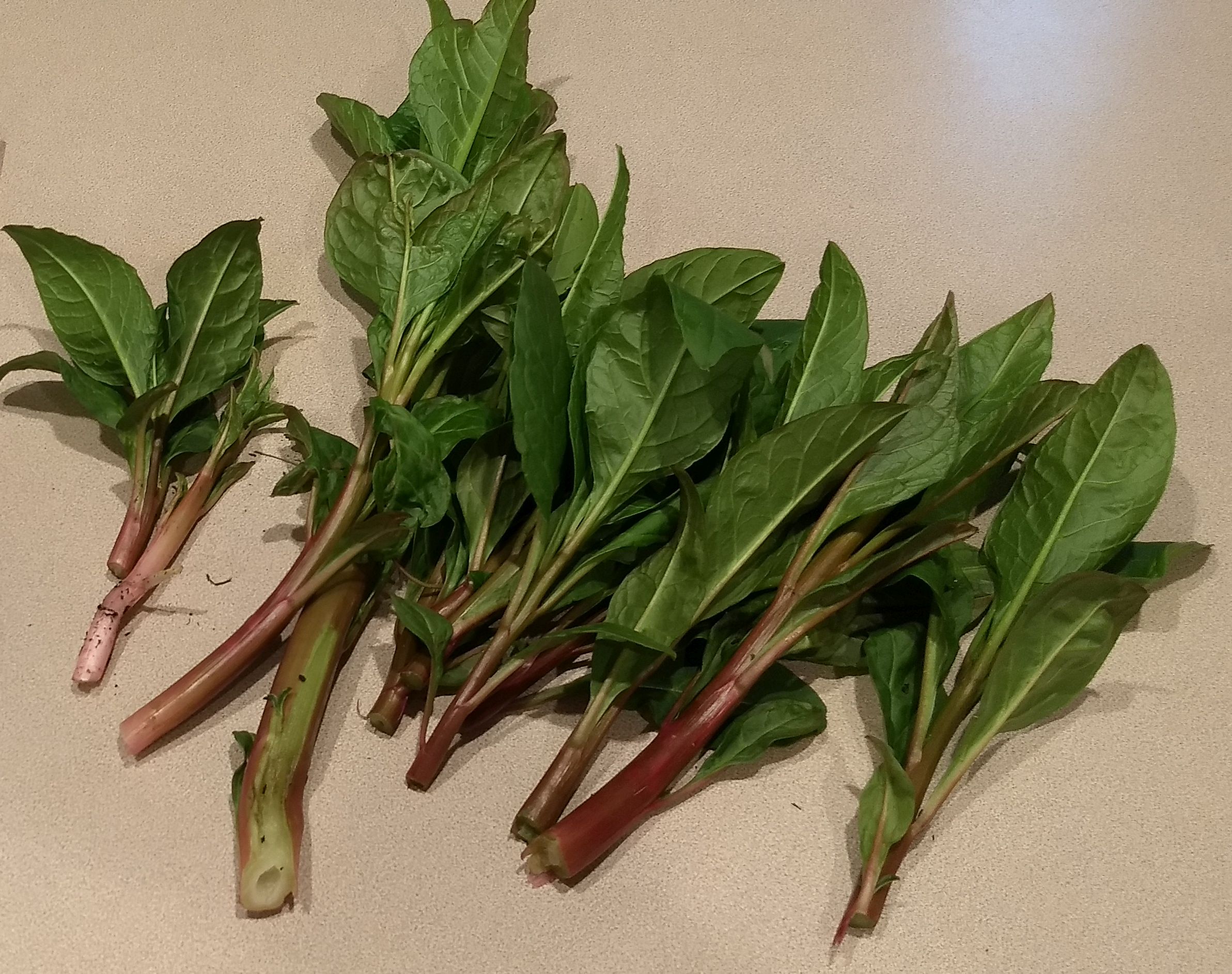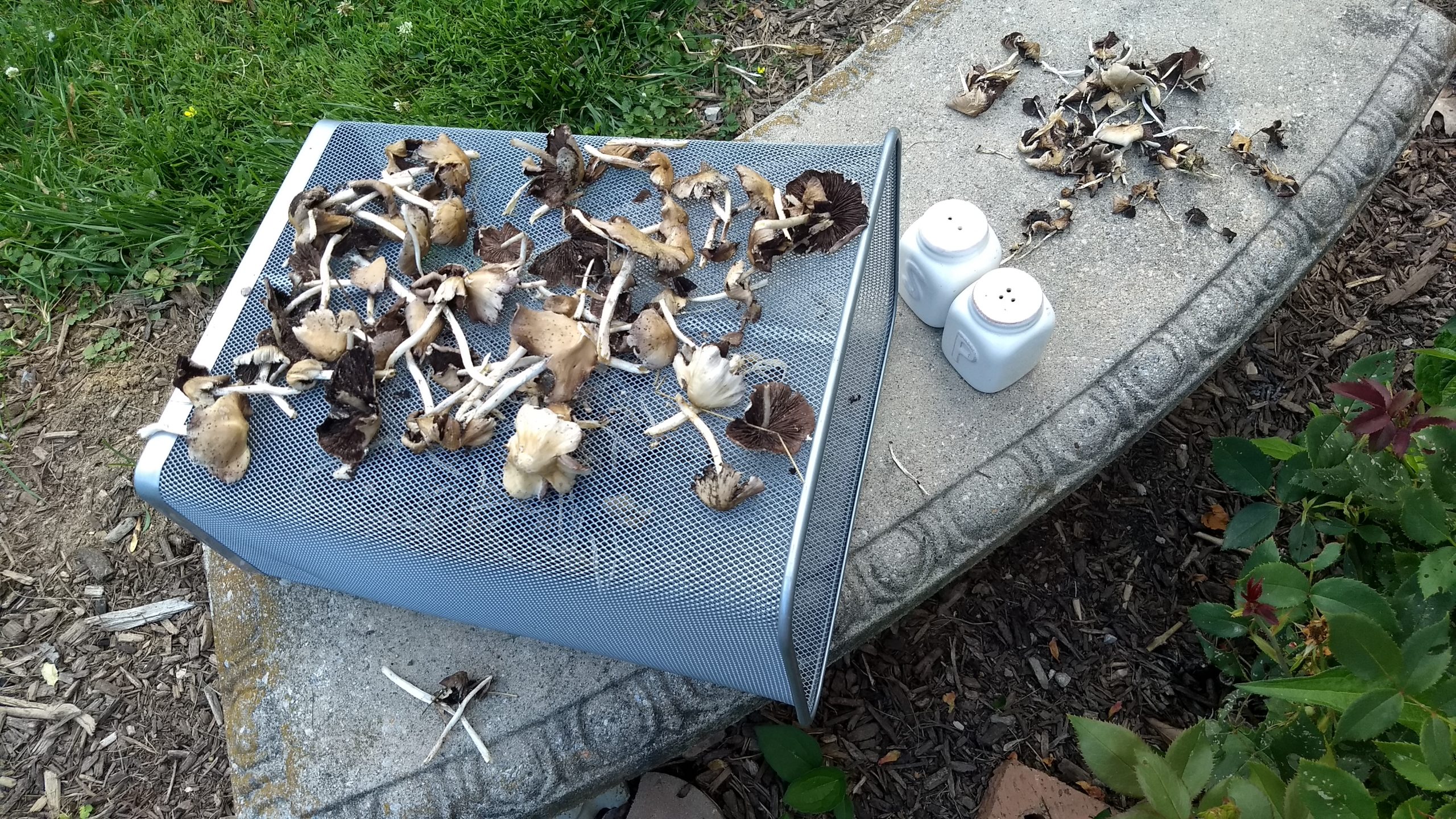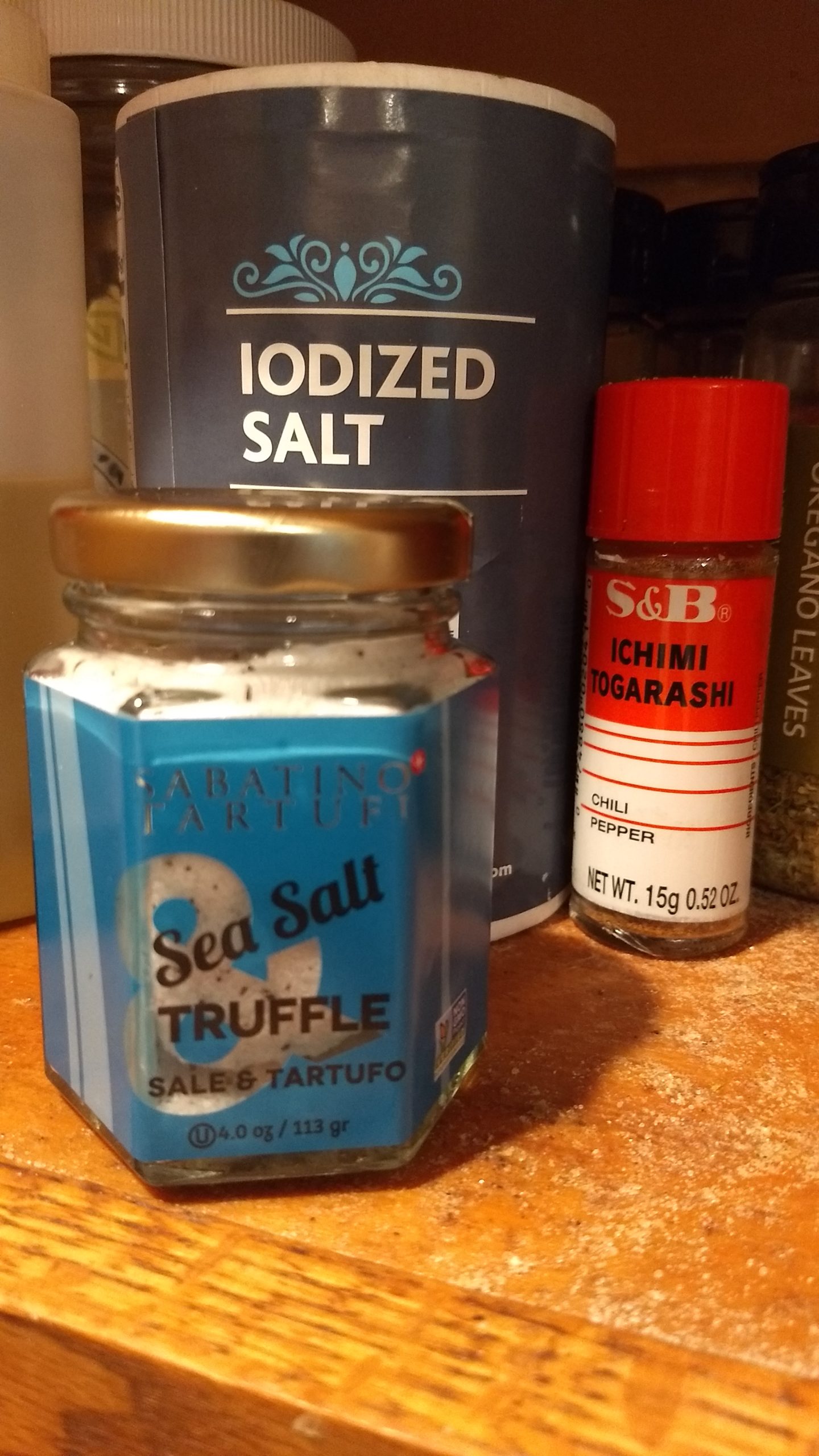Food
Notes on Food. I should split this up into Foreign Food, Restaurants, Ingredients, Drinks, Cooking, and Miscellaneous Food.
Contents
Buying Ingredients
- The Chile Woman, Bloomington, Indiana.
Dishes
Basa: A kind of farmed catfish, which I had in the Umi Grill Japanese restaurant as: Breaded whitefish served with greens, fresh mango, shrimp, asparagus and avocado in a garlic dressing.
But it might be unsanitary if imported from Vietnam.
Marmite
"HOW TO MAKE YOUR OWN MARMITE". An exquisite familiar essay, on par with Joseph Epstein's if more oriented towards pleasures of the flesh than towards high literature:
When I started blogging I searched around for an original name. Not an easy task, blogger rejects any blog name that has already been chosen. I reached deep inside myself and thought about who I truly am, my background, my influences, formative experiences and I came up with the moniker MsMarmitelover.
For I am a Marmite baby. I had Marmite on toast for breakfast every morning...
The recipe:
RECIPE FOR HOME MADE MARMITE:
A litre of Brewer’s yeast (top fermentation from a brewery)
A little sea salt
1 onion, diced
2 carrots, diced
1 turnip, diced
1/2 celery stick, diced
1) Put a litre of brewer’s yeast with a little salt, in a bain-marie. Simmer at blood heat, 30 to 40 ºc for ten hours or overnight.
2) Then simmer this mixture at 50 to 60 º c for 2 to 3 hours.
3) Boil at low temperature 90ºc for half an hour. (In the factory they have a special machine for this, or you could ascend a mountain of 10,000ft, to achieve low altitude boiling)
4) Filter though coffee papers or a sieve and cheesecloth
5) Let it cool for a day or so. It separates further.
6) Filter again.
7) You then want to convert it to a paste. This is best achieved by putting it in a large flat pan and simmering. On an Aga, you can simply leave the pan on the lid for a few hours. Keep an eye on the mixture.
8) Meanwhile boil up all the vegetables until they are cooked. Strain off the liquid and incorporate into the Marmite paste.
9) Let the mixture reduce into a Marmite like texture. Do not allow it to burn:
The entire process takes about ten days.
Pokeweed

Snacks
- Ritz Crisp & Thins, Cream Cheese and Onion (2021).
Mushrooms
- Salted Psathyrella snacks.

- Sabatino Tartufi Truffle Salt.

Cooking Shows
- That southern cook-- Collard Valley.
- Good Eats
- Iron Chef
- Julia Child
Drinks
- Greystone Cellars red and white table wine is very good. About $11.00/bottle.
- Kettel cucumber-mint vodka.
- Spooky dill pickle Bloody Mary mix.
- Pilschuterz apple cinnamon fortified wine.
- Hark and Holldy Gluhwein, like Norweigan Glugg, a German mulled wine with vanilla, cinnamon, nutmeg, cloves, and orange peel. Cheap, too.
- Sake Talk's 5 ESSENTIAL SAKE INGREDIENTS and Midwest Homebrewing and Winemaking Supplies's
Knives
Knife Maintenance and Sharpening, by Chad Ward, August 13, 2003:
The purpose of a sharpening stone is to grind the edge and remove metal. Oil reduces friction and makes the process much slower. Supposedly oil helps float away metal particles that would otherwise clog the pores of the stone. You can do the same thing by wiping the stone with a damp cloth when you’re done..
...
Waterstones are another matter entirely. Both Japanese and synthetic waterstones require water in order to cut effectively. Japanese waterstones can be damaged if used dry and must be soaked thoroughly before use. Waterstones wear very quickly, revealing new layers of cutting abrasive as the swarf builds up and is washed away. That’s why they are so effective. There is always a new layer of sharp abrasive cutting away at the metal of your edge. By the way, “swarf” is one of those cool terms you get to toss around when you discuss sharpening. Swarf is the slurry of metal filings and stone grit that builds up as you sharpen.
...
Push cutting involves parting fibers and requires a polished edge. Shaving, for example, is push cutting. So is peeling an apple or julienning a carrot. You are pressing your thin, finely polished edge through the fibers of the food, pushing them to either side.Slicing, on the other hand, involves severing fibers and requires a toothier edge. Crusty bread, a soft tomato, roast chicken – anything with an outer layer that is tougher than the squishier inside demands an edge that can bite into the skin without crushing the interior. A highly polished edge will simply skate over the surface of a ripe plum until you put enough pressure on it to push through the skin. But the fruit underneath will give way before that happens. Not pretty.
Now you must decide. Do you do more push cutting or more slicing? Do you have knives that you use more often for dicing, peeling and julienning? Do you have a knife that is dedicated to slicing?
A good basic strategy is to start with a standard 20 degree bevel (a 15/20 double bevel if you’re feeling adventurous) with a moderately polished edge on all your knives. This alone will be a vast improvement over what you might be used to.
Then branch out. If you have a knife that is only used for vegetables, a santoku for example, you can take it to a very fine, highly polished edge.
...
One of the easiest ways to ensure that you are matching an existing bevel is to coat the edge with magic marker. As the magic marker is abraded away by the sharpening stone. you will be able to see where the metal is being removed and whether you have matched the angle properly. Once you have coated both bevels with marker, take a swipe or two down your stone. If the marker is wiped off over the width of the bevel you have matched the angle properly. If your angle is too high, only the marker near the very edge will be removed.
...
Take, for example, a plastic pen, stand it at a 30-45 degree angle on a countertop and lay the knife edge straight up and down on the plastic. Pull the edge from heel to tip. If it bites in, you’ve set your edge correctly. If it slides off, you have some more work to do. The sharper the blade, the smaller you can make the angle before it slips.
Chinese Food
"Many people dislike Shanghai food—which I’m defining as the broader region that encompasses Suzhou, Hangzhou, Nanjing, etc.—for being too sweet. In my mind, it’s unquestionably the finest cuisine. Not only is it the best at the high end, its noodles, soups, and soup dumplings make up some of the tastiest casual food as well. It’s the cuisine that varies most by season, e.g. bamboo shoots in spring and mitten crabs in fall, which showcases the bountiness of the region and its emphasis on freshness. (That’s quite unlike the tradition of the north, which celebrates every and any occasion with plates of dumplings.) The mixing of vinegar and hot fat produces a slight, magical sweetness, and that is something that the Shanghainese understand well, along with many other secrets.
I expect that everyone is familiar with the glories of Sichuan food, there’s little that I need to add here. I’ve eaten plenty in Chengdu and Chongqing, I hope next that I can explore some of the villages in the countryside that feature local specialties.
And I hesitate to say that Yunnan is next best because it has become so trendy. Some people question whether Yunnan food is coherent enough to be a cuisine, or whether it’s a useless label for dishes that vary over a huge and mountainous province. I think of it as Chinese cooking styles with Southeast Asian ingredients, featuring dishes like rice noodles, which can be more soft or more chewy than wheat noodles, served in a mutton broth and topped with a generous fistful of fresh mint. There are many things one can find there that are uncommon in the rest of the country, like cheeses. My favorites are the mushrooms: there’s nothing more appealing than some freshly-picked mushrooms stir fried with bits of Yunnan ham.
Any of these three regions are worth traveling to for a food tour. My candidate for an underrated cuisine is the food of the northeast, which features breads and stews of huge proportions. I haven’t had enough exposure to foods of all the interior provinces, but I’m happy to suggest that the cuisines of Jiangxi and Anhui are worth exploring. And the category of highly-rated and correctly-rated cuisines should include the foods of the northwest (breads and noodles), Hunan (spicy, though often too oily for me), and Taiwan (my favorite use of seafood). The following are overrated:
Cantonese: surely the most overrated cuisine in China, and perhaps the most overrated cuisine in the world. I concede that dim sum is often a delight; and no lunch can be more simple or more satisfying than a few cuts of roast duck or pork layered on a bed of rice, accompanied by sprigs of greens and some gravy. But we’ve too long allowed Cantonese food to dominate the world’s conception of Chinese cuisine. The high-end dishes don’t come close to the refinement of Shanghai cuisine: chefs reveal contempt for themselves and their craft when they deep fry a lobster, as if it were a carnival food, and I’ve never understood the emphasis on shark fins and sea cucumbers. Please let’s not continue allowing Cantonese to be a default choice for business lunches, Shanghai is more fine.
Beijing’s imperial cuisine is the only Chinese cuisine that I consider to be dumb. It wasn’t until I moved to Beijing that I realized how many of the unfortunate facts of Chinese cooking are the creation of local traditions: the dreadful “brown sauce,” the excessive use of starch, and the compulsive need to fry. Peking duck is fine every once in a while, but it’s far too much fuss and expense for something of medium tastiness. There are so few redeeming dishes in imperial cuisine that I wonder if it has been yet another cruel trick pulled by the eunuchs to hoodwink the emperor, depriving him of culinary pleasures for sport.
Hotpot transcends regions now, so let’s treat it as its own category. Hotpot is a fun social activity to do with friends. It’s a way to display skill at the table, through the management of cooking a variety of foods. But it can never be any sort of culinary revelation. My worst nightmare is for hotpot restaurants to take over every retail restaurant space, so that our only choice is to line up to eat at them inside malls, forever.
Here is my four-step process for ordering success in China:
- Greens are usually the glories of the cuisine: order as many vegetables as there are people
- If you will have a meat, consider the juiciness that pairs well with the starch: something saucy if you will eat with rice, or less saucy if you will have soup noodles
- Order Yunnan mushrooms if they are on the menu
- Fill out the rest with cold appetizers, they are never a bad idea"